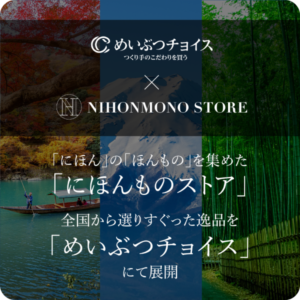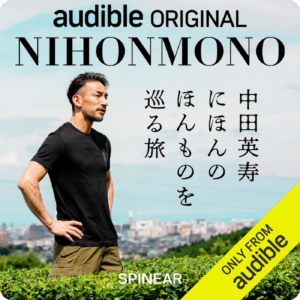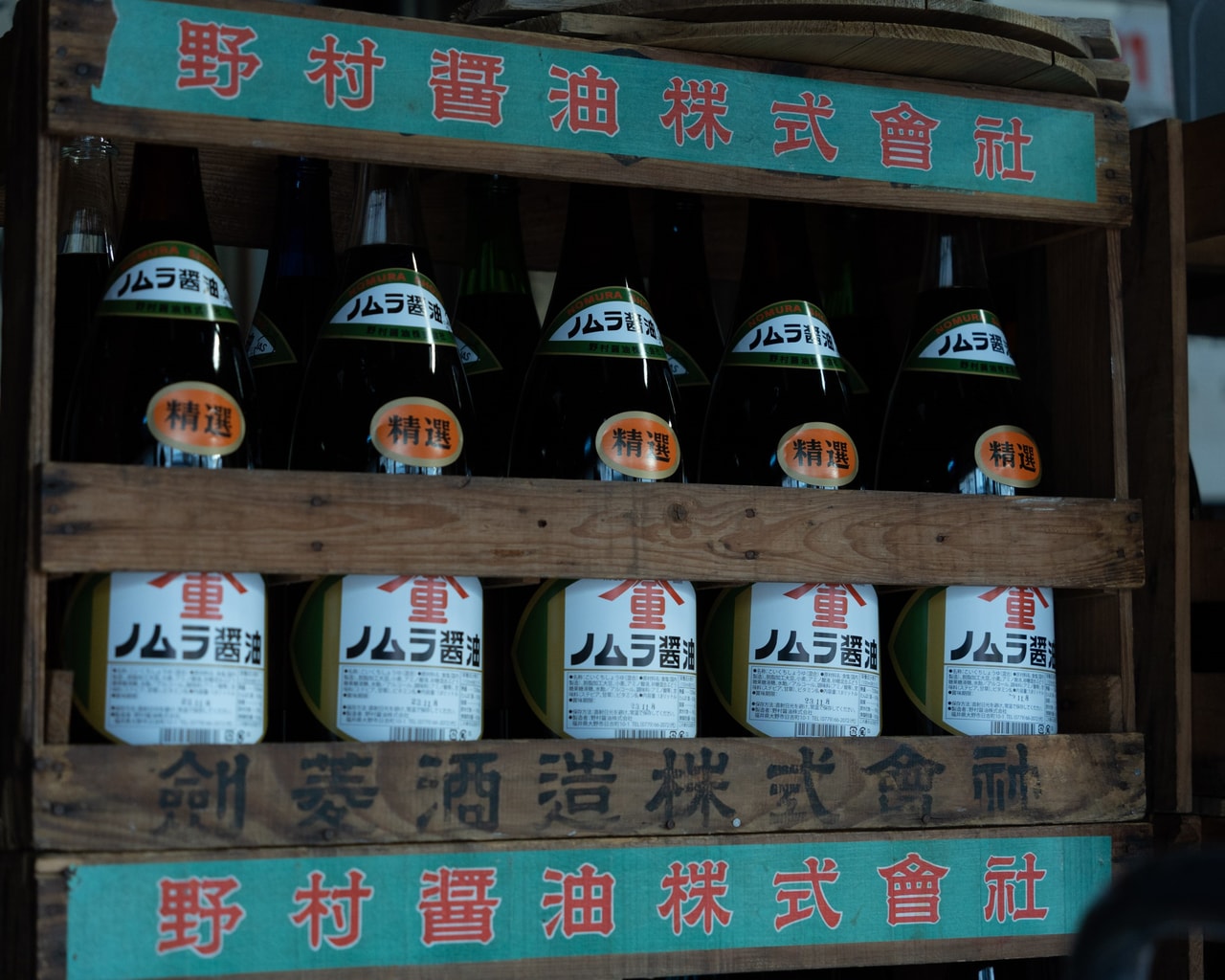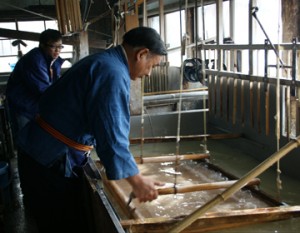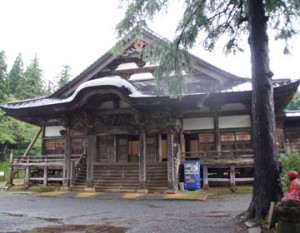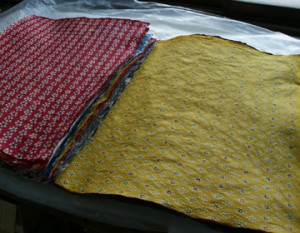Ono City, the castle town of Echizen Ono Castle, known as the “Castle in the Sky”, is a treasure trove of spring water, including the famous “Goshozu” water, which has been selected as one of Japan’s top 100 waters.
Nomura Soy Sauce, which is brewed using this famous water, is one of the few soy sauce breweries in Japan that insists on making its own koji (fermented rice).
Please enjoy the soy sauce that brings out the unique flavors of this region, such as the sweet-tasting soy sauce made from locally produced soy beans.
Nomura Soy Sauce is a long-established soy sauce brewery that was founded in the early Meiji era. Akashi Nomura, the sixth-generation head of the brewery, has inherited the traditions of the brewery established by his predecessors, and is breathing new life into the soy sauce industry by developing new products one after another with a flexible approach that takes account of the changing times.
Traditional soy sauce brewed in a “town of famous water

Ono City is located in the north-east of Fukui Prefecture, and is also known as the castle town of “Echizen Ono Castle”, which is famous throughout the country for its spectacular view of the sea of clouds from the castle, and is known as the “castle in the sky”. It is also famous as a treasure trove of spring water, and the city center is a pure water village with many spring water sources, including “Goshozu”, which has been selected as one of the 100 best waters in Japan by the Ministry of the Environment. In the center of the city is the Nomura Soy Sauce warehouse, where they have been brewing soy sauce using the delicious local water for many years.
Sweet and smooth Fukui soy sauce
There are currently around 20 soy sauce manufacturers in Fukui Prefecture, including Nomura Soy Sauce. Speaking about the soy sauce made in Fukui, Mr. Nomura says, “There is a characteristic to the soy sauce of Hokuriku, which includes Fukui. That is that there are many ‘sweet’ soy sauces. As you might imagine, in the past, sweet foods were precious, and sweet soy sauce may have been one way of showing hospitality.”
Incidentally, soy sauce from Kyushu is also sweet, but it has a thicker texture, whereas soy sauce from Fukui is thinner. Basically, the lighter the color of soy sauce, the higher the salt content. The color of soy sauce from Fukui is somewhere in between dark and light soy sauce. It has long been popular with the locals as a sweet and moderately salty “good balance” soy sauce. Nomura Shoyu’s standard product “Ohno no Oshouyu” is also a sweet and light soy sauce unique to Hokuriku.
A rare brewery that makes soy sauce from koji
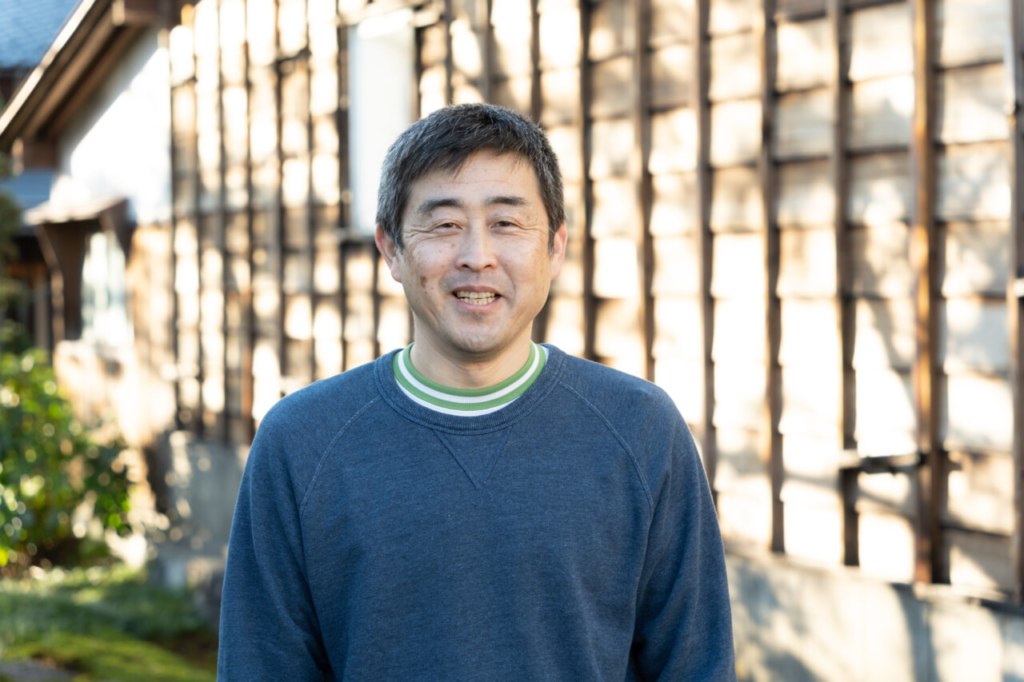
The process of making soy sauce begins with steamed soybeans and roasted wheat being mixed together to make koji, then koji is added to salt water and fermented in a tank to make moromi. After repeated stirring, the moromi is fermented and matured, and then the unfiltered product is called “kiage shoyu”. This kiage shoyu is then pasteurized and bottled for distribution as a product. When pasteurizing the raw soy sauce, adding sugar, starch syrup, or other sweeteners, as well as flavorings such as amino acids, will result in a sweeter soy sauce.
In the past, each soy sauce brewery produced its own raw soy sauce, but as Japan entered a period of rapid economic growth, in order to respond to mass production and mass consumption, there was an increase in the number of cases where small and medium-sized breweries formed cooperatives and produced raw soy sauce together. Purchasing the soy sauce made by the cooperative and then heating it and adjusting the flavor to create their own unique products helped to reduce the risk of investing in equipment and also lowered costs, which was an advantage in surviving price competition with the big companies.
As Mr. Nomura says, “There are nearly 1,000 soy sauce manufacturers in Japan, but there are only one or two soy sauce breweries in each prefecture that make soy sauce from koji mold like we do,” and even today, Nomura Shoyu continues to stick to making their own koji.
Mr. Nomura, who says, “Because there are fewer and fewer breweries that make koji from scratch, the homemade koji we make is what gives our soy sauce its unique flavor,” makes his koji in the winter, when there is little change in temperature throughout the year. Even so, the conditions change significantly between January, when the temperature is at its lowest, and March, when spring arrives, so he adjusts the amount of koji seed he uses to respond to these changes, and makes koji that he thinks is best suited to soy sauce. He makes his soy sauce using the temperature changes of the four seasons in Ohno, without adjusting the temperature to promote fermentation and maturation.
Making soy sauce with Japanese soybeans
Since Japanese cuisine was registered as a UNESCO World Intangible Cultural Heritage in 2013, soy sauce, which is essential for Japanese cooking, has also attracted a lot of attention from overseas. However, the harvest of soybeans, which are the main ingredient of soy sauce, varies greatly from year to year and region to region, and the number of farmers growing soybeans is decreasing. The overall self-sufficiency rate, including soybeans for animal feed, is only 6%. The current situation is that the self-sufficiency rate for food use alone is only around 20%.
“The low rate of domestic self-sufficiency for soybeans is a major issue for the soy sauce industry. At our brewery, we mainly use soybeans from India for our standard products, but we are also trying to make high-value-added soy sauce using domestic soybeans,” says Mr. Nomura.
Traditional production methods as ‘individuality’
Mr. Nomura, who was the managing director of Nomura Soy Sauce under the previous generation who had inherited the company’s traditions, was approached in 2007 by a local farmer who grew green soybeans and asked if he could use them to make soy sauce, and he developed an original product called “green soy sauce”. Cheap soy sauce can be made quickly using ground soybeans, but green soy sauce, which uses whole soybeans, takes longer to ferment. Also, when making the soy sauce, fermentation progresses more quickly when the temperature is raised, but in Nomura Soy Sauce’s brewery, where the temperature is not controlled, fermentation and maturation progress more slowly during the hot summer months, and it takes two years to make. The rare green soybeans are expensive to buy, and because it takes so long to make, the selling price is about 7 to 8 times that of standard products, but it has become a long-running product that continues to this day. As no sugar or amino acids are added during the heating process, the natural sweetness of the green soybeans is brought out. Unlike the soy sauce that is highly valued in the soy sauce industry these days, which contains a lot of amino acids, the traditional production method is now a unique selling point. Fortunately, Nomura Shoyu has continued to pass on the traditional production method. Mr. Nomura says that this is an invaluable asset.
Thanks to advances in manufacturing technology, the soy sauce produced by major manufacturers, which is available at affordable prices, has become a common condiment on our dinner tables. Conversely, this means that we are seeing less and less of the products from the small-scale soy sauce breweries that exist in each region.
As a result, it has become less common to compare the different characteristics of soy sauce from different breweries. Aomame Soy Sauce is a product that adds value by returning to the “common sense of the past” . However, Mr. Nomura, who also felt that a return to the origins alone would not be enough to respond to the changing times, was also promoting new initiatives.
Opening up the future of soy sauce with new products
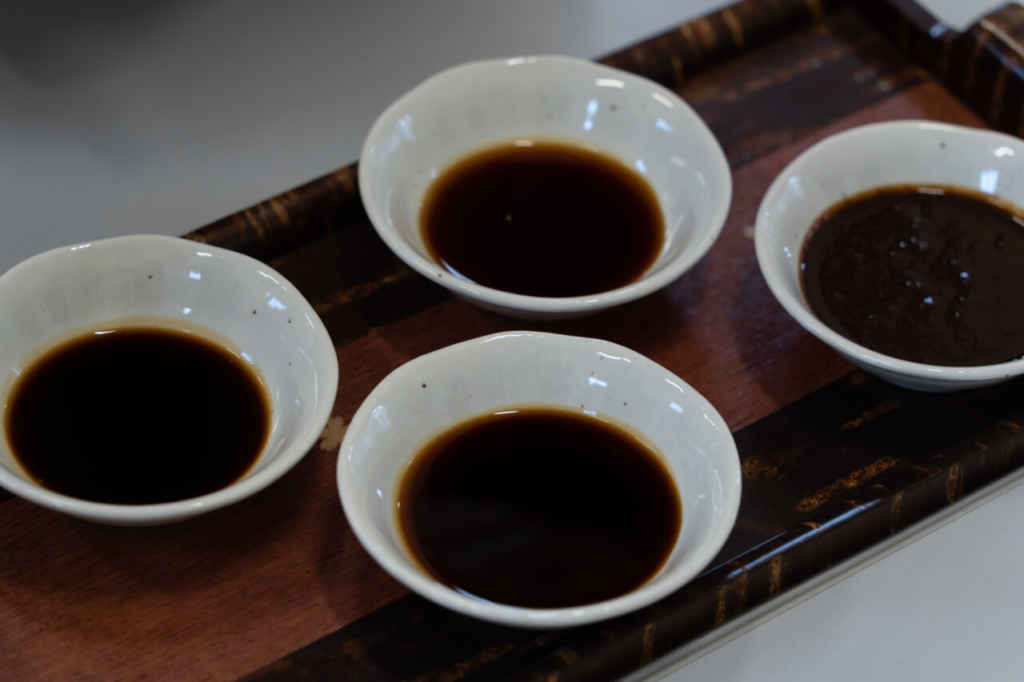
As Mr. Nomura says, “The amount of soy sauce shipped has been declining since peaking in 1973, the year I was born,” and the annual per capita consumption has also decreased by about half in the 50 years from 1973 to 2021. “To put it in an extreme way, soy sauce that contains added sugar and amino acids, like our standard products, will not grow any more,” Mr. Nomura asserts. In an age of changing trends, such as the diversification of food, the increase in single-person households, and the rise of eating out and home-meal replacement, the number of occasions when people need to prepare food at home has greatly decreased. The use of soy sauce has overwhelmingly increased to the point where it is simply poured over food that has been prepared on the table. In this situation, Mr. Nomura saw a way forward in the development of a niche new product that would not be a soy sauce that goes with everything, but “this soy sauce for this dish”.
Developing a soy sauce sauce dedicated to Fukui specialties
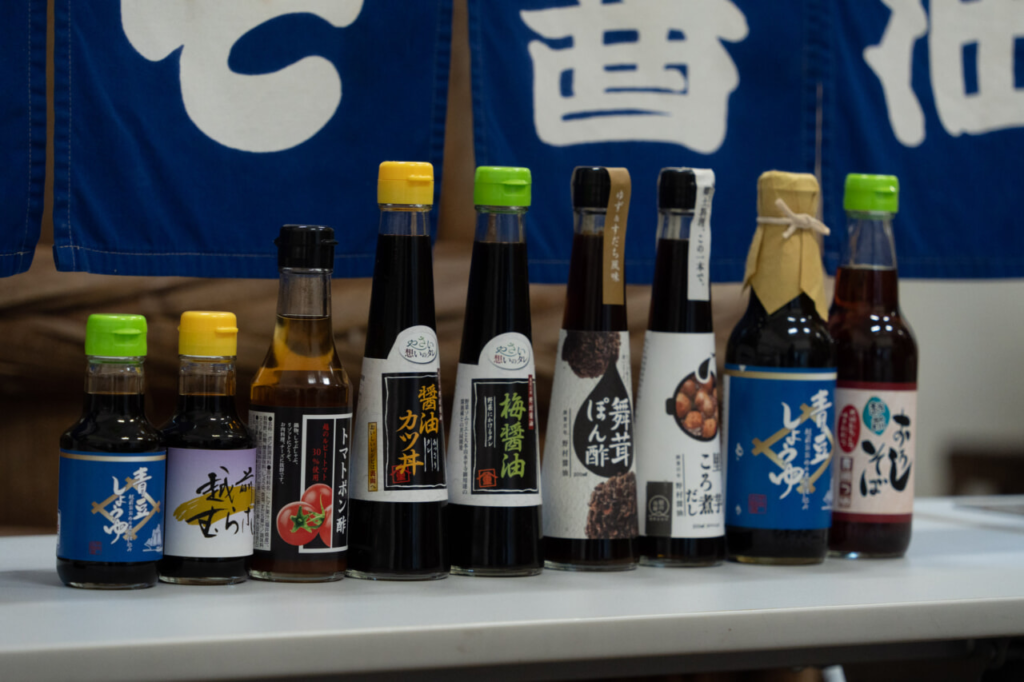
It takes time for new products to become recognized. Furthermore, for a small brewery like Nomura Shoyu, it is difficult to promote new products on a large scale or to secure shelf space in supermarkets and other retailers at the time of launch. Therefore, Nomura Shoyu decided to create a special soy sauce sauce that would enhance the flavor of the local specialty dishes, and launched a campaign to improve the brewery’s recognition.
The first step was the Fukui specialty “oroshi soba” dipping sauce, which was developed and commercialized in 2003 by the previous owner in collaboration with other soy sauce breweries in Fukui Prefecture. It is based on soy sauce, with the sweetness kept to a minimum, and the flavor is designed to bring out the aroma of the soba and the spiciness of the grated daikon.
Later, in 2009, Mr. Nomura, who took over the brewery from his father, came up with the idea for a “soy sauce katsudon” based on the sauce katsudon, a specialty of Fukui Prefecture, and succeeded in getting it on the menu at over 50 restaurants in Fukui Prefecture. He then began to accelerate the development of new products, starting with the commercialization of the “Assari Tare Shoyu Katsudon”, a sauce specially made for soy sauce katsudon that he had popularized himself.
The soy sauce brewery was able to develop such tsuyu and tare because the previous owner, Mr. Nomura’s father, had been researching them since Mr. Nomura was still a child. When the previous owner was asked by a noodle factory he had a relationship with whether it would be possible to make soba tsuyu, he began by making prototypes in a saucepan, and then asked an expert from a major food manufacturer for advice. He worked on developing the recipe, the necessary equipment, and hygiene management, while receiving advice. What was most important, however, was that they had soy sauce, the main ingredient in tsuyu and tare, on hand, says Mr. Nomura. “If we were a food manufacturer, we would have to buy soy sauce, but we have so much of it that we could sell it. And because the shelf life of soy sauce is over a year even after it has been bottled, we can use the extra stock we have from reduced shipments to create new value in tsuyu and tare.
Soy sauce tare that makes the most of Ohno’s specialties
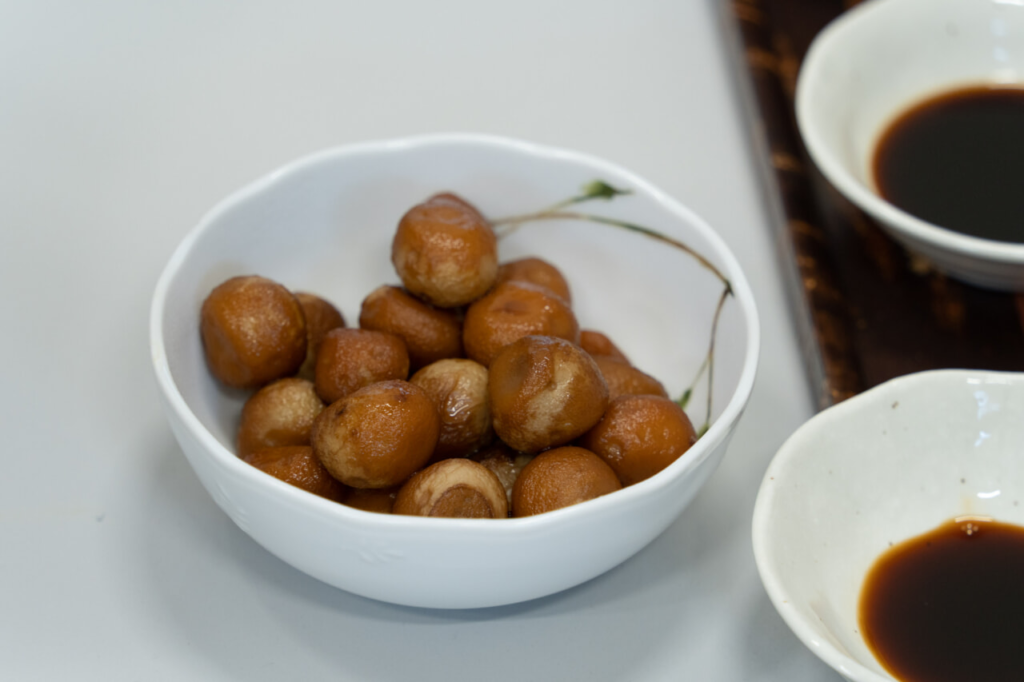
In 2014, they launched a new product called “Yaki-uo ni au oshouyu” (soy sauce that goes well with grilled fish), which focuses on a local specialty of their hometown, Ono City. In Ono, there is a tradition of eating whole grilled mackerel on the 11th day after the summer solstice, and this product has a strong umami flavor to go well with that mackerel. In 2017, they also developed “Satoumi Koroni Dashi” and “Maitake Ponzu”. The taro simmered in broth is a simple seasoning that you can use to make the Ono local dish “simmered taro” easily by simply boiling 500g of taro without using any water. On the other hand, the maitake mushroom ponzu is an innovative product that makes use of the large amount of simmering liquid that is produced by the manufacturers that process the Kuzuryu maitake mushrooms, a specialty of Ono, to create a ponzu sauce that is full of maitake mushroom flavor and has a mild acidity.
Actively engaging with consumers
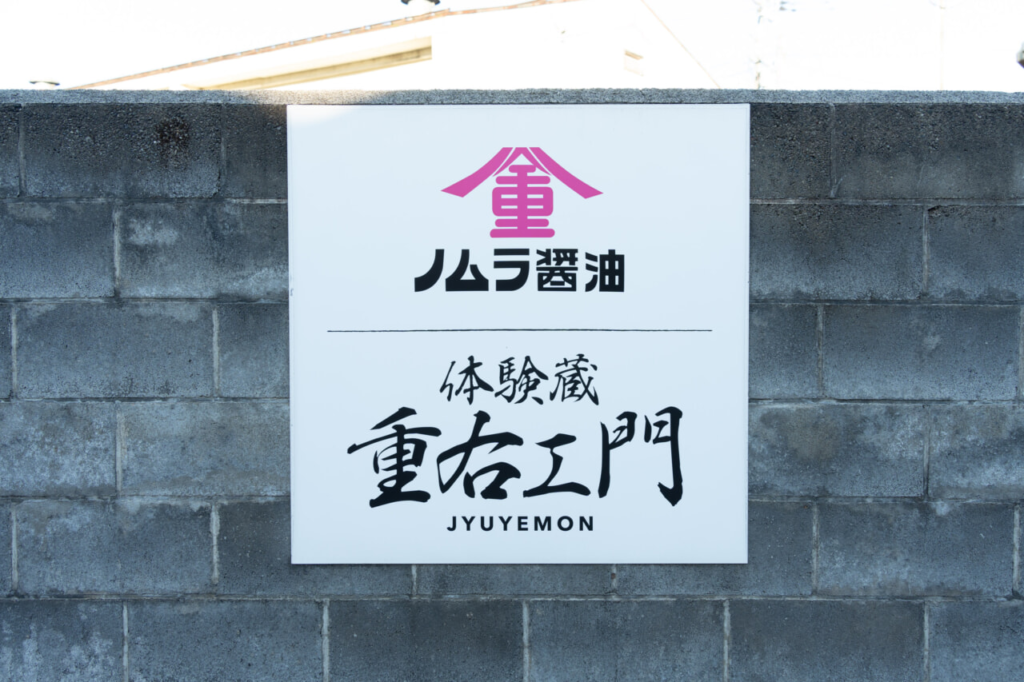
After receiving a positive response to the development of a new soy sauce product specializing in Fukui specialties, Mr. Nomura also began initiatives to make Fukui soy sauce more accessible to people. In 2016, he opened “Jueimon, the Experience Brewery” on the grounds of Nomura Soy Sauce. Visitors can experience the process of “ka-ire”, which involves stirring the moromi mash using a paddle, and watch the pressing of the fermented moromi mash, allowing the facility to convey the traditional art of soy sauce making to a wide range of people, from children to adults.
In 2019, they launched “Nameless Raw Soy Sauce” in collaboration with a local company that handles online shopping. The general soy sauce that you find in supermarkets has been pasteurized to stop the fermentation process, giving it a rounded flavor and a savory aroma. Also, even if it says “raw soy sauce” on the label, in many cases the pasteurization process has been carried out to remove the bacteria that promotes fermentation. On the other hand, “Nameless Raw Soy Sauce” is bottled raw soy sauce that has not been pasteurized or had the bacteria removed after being pressed. Raw soy sauce has a rich flavor and a fresh, sour taste. The ingredients used to make “Nameless Raw Soy Sauce” are soybeans of the Ohno native variety called “Dai Daruma”, wheat from Fukui Prefecture called “Fuku Komugi”, and water from Ohno. As with the other soy sauce, the soybeans are prepared whole and fermented and matured without temperature control, so it takes two years to complete. So, two years before the product was released, they created a community called the “Fresh Soy Sauce Club” with the help of a soba noodle restaurant in Fukui City, and continued to communicate the use of fresh soy sauce in cooking, the traditional production method of soy sauce, and their commitment to the ingredients through events and social networking services. They also tried crowdfunding, and greatly exceeded their target amount. This project was truly one that moved not only “things” but also “people” and “events”.
The appeal of soy sauce for the future
The small brewery’s many challenges steadily increased its name recognition, and gradually they began to receive offers of collaboration from famous chefs and luxury brands outside the prefecture. In 2020, Nomura Shoyu’s soy sauce was selected to be used in the light meal menu for the Gran Class of the Hokuriku, Tohoku and Hokkaido Shinkansen bullet trains. The menu was supervised by Chef Kenzo Hashimoto of Ichirin, a Japanese restaurant that has received two Michelin stars. The chef asked Mr. Nomura for a soy sauce that would go well with the menu, which had the theme of “rediscovering Japanese food”, and so he specially pasteurized his “nameless raw soy sauce” for the chef.
In 2021, maitake ponzu was used as an ingredient in the “vegan salad noodles” served at the “GODIVA café Tokyo”, a collaboration with Fukui Prefecture, which is run by the luxury chocolate brand “GODIVA”. In this way, Nomura Shoyu continues to expand its field.
The owner of the brewery, Mr. Nomura, says, “We will continue to pursue the kind of soy sauce that is in demand today, while also cherishing the origins of soy sauce making.”
Each soy sauce brewery has its own unique flavor, and using different soy sauces for different dishes brings out the best in the flavors. Nomura Soy Sauce will continue to convey the appeal of this ‘old yet new’ soy sauce.
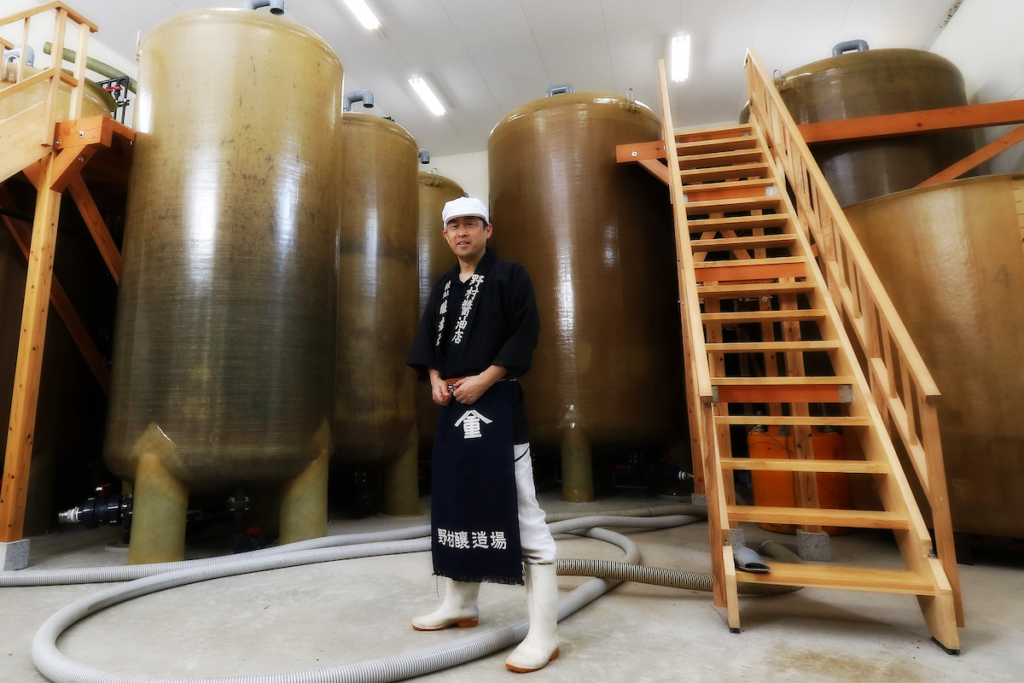
The situation surrounding soy sauce production has changed greatly since the early Meiji period, when Nomura Shoyu was founded, and today. Soybeans are now imported, and there are only a few manufacturers that make soy sauce from koji. As one of the traditional soy sauce breweries, we are constantly searching for the ideal flavor that Nomura Shoyu should produce. In addition, we will continue to create products that have an extra appeal, as deliciousness is now taken for granted.
